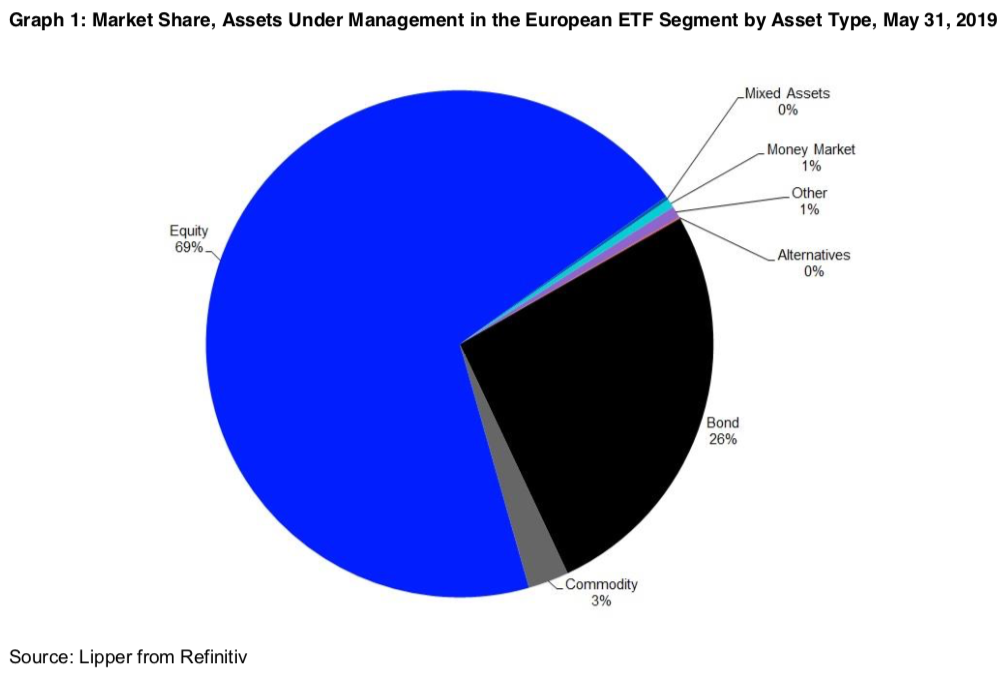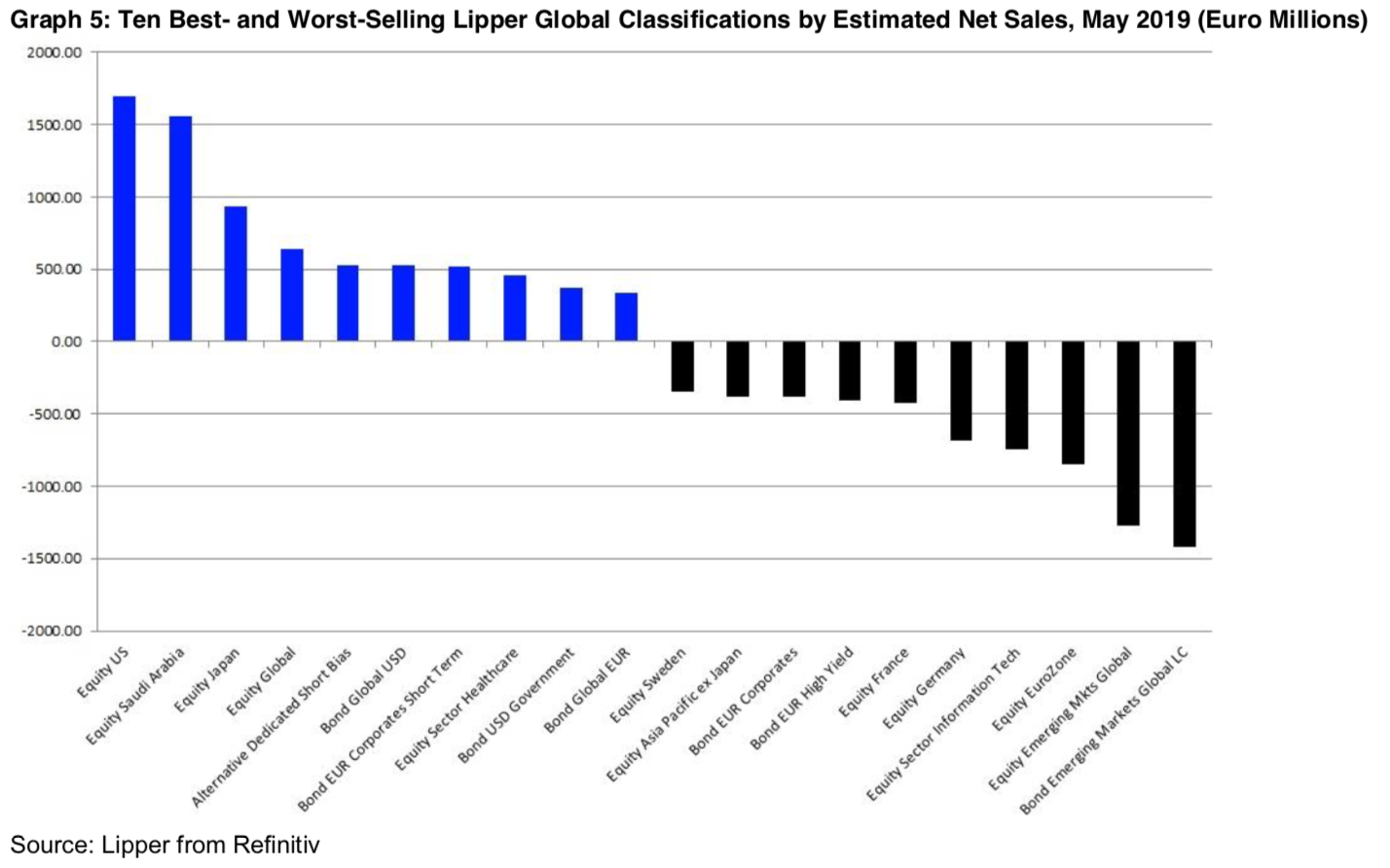The extent to which the take-up of fixed-income ETFs is now a well-established trend in the European market has been highlighted by the latest figures on money inflows for May.
The report from analysts at financial data source provider Refinitiv shows that there was once again net inflows totalling €2.3bn into European ETFs last month. Of that, bonds accounted for €1bn which Refinitiv analyst Detlef Glow, head of EMEA research at Lipper/Refinitiv, said was “surprising” given the market backdrop.
Indeed, while there was a net inflow in May, the value of ETF assets under management decreased by €25.1bn due to the market volatility engendered largely by the backdrop of talk a trade war between the US and China.
The Refinitiv/Lipper data show that bonds now account for 26% of all ETF AUM in Europe while equity ETFs are worth 69% of the total.

In late May, Refinitiv/Lipper increased the number of peer group classifications to 175. This gives a more detailed breakdown of where ETF assets in Europe are concentrated. Unsurprisingly, it is US equity ETFs that lead the field by some distance with €130.9bn of AUM compared to its nearest challenger global equity with €69.7bn.
The biggest bond grouping is European corporate bonds which is the sixth largest group by AUM with circa €3bn of assets.
From concentrate
Refinitiv pointed out that the top five classifications account for nearly 45% of total AUM while the top ten amounts to just over 58% of the total.
Glow said the evidence of concentration of European AUM in relatively few sectors was clear. “These numbers showed assets under management in the European ETF industry continued to be highly concentrated,” he said.
“It was noteworthy that the rankings of the largest peer groups were quite stable, indicating European investors use the funds from these peer groups as core holdings and not just as so-called satellites that are bought and sold frequently to implement asset allocation views in investor portfolios.
The obverse of this concentration is that at the lower end of the scale, there are some ETF funds which have low assets and are at “risk of being closed in the near future.” “They are obviously lacking investor interest and might, therefore, not be profitable for their respective fund promoters,” Glow added.
Saudi interest
The Refinitiv/Lipper data also confirmed the popularity of funds focusing on Saudi Arabia. As was evident from a report in Mid-May from Ultumus, enthusiasm for the country following its inclusion for the first time in MSCI’s emerging market index meant that Saudi Arabian funds were second only to US equity in terms of sales in May.
At an individual fund level, it was Invesco’s MSCI Saudi Arabia and iShares’ Saudi Arabia Caped funds which took the one and two on the top-selling individual ETFs list, attracting €0.8bn and €0.7bn respectively.

Of those facing outflows, it was emerging markets bonds which led the way losing €1.4bn over the month. Glow pointed out that it was “remarkable” that one of the favourites from the past few months had fallen out of favour.
In provider terms, iShares clearly still dominated with €333.8bn in AUM, way ahead of the nearest competitor Xtrackers with €78.3bn and Lyxor with €60.2bn. In fact, the top 10 accounted for over 93% of the total AUM leaving 41 other fund promoters fighting for the scraps.
The concentration also meant that 51 ETF promoters faced total net outflows on €2.7bn in total between them.
Fund goliaths
Glow suggested the fund level statistics also showed how concentrated with market was with four providers accounting for the top 10 and over 50% of total net inflows..
“The flow pattern at the fund level indicated there was a lot of turnover and rotation during May, but it also showed the concentration of the European ETF industry even better than the statistics at the promoter or classification level,” he said. “Given its size, it was surprising that only two of the 10 best-selling funds for May were promoted by iShares.”








